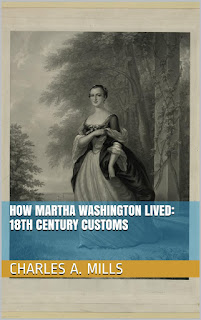National D-Day Memorial in Bedford, Virginia
“Incentive is not ordinarily
part of an infantryman’s life. For him there are no 25 or 50 missions to be
completed for a ticket home. Instead the rifleman trudges into battle knowing
that statistics are stacked against his survival. He fights without promise of
either reward or relief. Behind every river, there’s another hill….and behind
that hill, another river. After weeks or months in the line only a wound can
offer him the comfort of safety, shelter, and a bed. Those who are left to
fight, fight on, evading death but knowing that with each day of evasion they
have exhausted one more chance for survival. Sooner or later, unless victory
comes, the chase must end on the litter or in the grave”
General Omar N. Bradley,
Commander US First Army.
June 6, 1944
On June 6, 1944 the Allies land in Normandy, on the north
coast of France.
Operation Overlord is underway.
June 7, 1944
Once ashore, the Allies must
consolidate the immediate defense of the beaches and form a continuous front by
expanding from them. The enemy fights stubbornly and is not easily overcome. In
the American sector the marshes near Carentan and at the mouth of the river
Vire hamper movements, and everywhere the country is suited to infantry
defense. Normandy
consists of a multitude of small fields divided by banks, with ditches and very
high hedges. Artillery support for an attack is thus hindered by lack of good
observation and it is extremely difficult to use tanks. It is infantry fighting
all the way, with every little field a potential strong-point.
June 11, 1944
During the night, under deadly
fire from American artillery, the Germans leave Carentan. The town is occupied,
but the Germans soon counter-attack.
June 12, 1944
Due to heavy resistance, the US
First Army has still not reached the line it was meant to occupy on day one of
the landing. Allied units advance slowly both in the Cotentin Peninsula
and south in the direction of St. Lo. In the first six days 326,000 men, 54,000
vehicles and 104,000 tons of stores have been landed.
June 13, 1944
A violent counter-attack by the
German 17th Armored Division to recapture Carentan carries the Germans to the
outskirts of the town before they are halted.
July 1, 1944
The headquarters of the US First
Army issues a directive for a general offensive. This is to begin on 3 July
with the US VIII Corps, west of the Cotentin
Peninsula and extend
progressively eastward to the rest of the Army.
July 3, 1944
At 5:30 A.M., in a blinding rainstorm, the American First
Army launches the “Battle
of the Hedges”.
July 5, 1944
Heavy fighting continues over
the whole Normandy
front.
July 6, 1944
The 83rd Division continues its
slow advance to the south against fierce German resistance. Every forward unit
suffers a steady drain of casualties from snipers, mortaring and artillery
fire, which both sides employ daily to maintain pressure upon each other.
July 7, 1944
The 83rd Division faces
opposition from two SS Divisions, the 2nd and the 17th Armored.
July 16, 1944
German Field Marshal Erwin Rommel
reports that since 6 June his units have lost nearly 100,000 men killed,
wounded and missing.
July 18, 1944
The US First Army enters St. Lo.
July 19, 1944
After capturing St. Lo the First
Army pushes on southward. By the end of July, temporary or permanent losses
from “battle fatigue” have reached twenty per cent of all American casualties
since D-Day. Between June and November 1944, a staggering twenty six per cent
of all American soldiers in combat divisions will be treated for some form of
battle fatigue.
The after action medical report
of First Army declared that: “...the rate of admission to the exhaustion
centers… during the first weeks of operations was in accord with the estimate
made previously, however, the rate thereafter increased to such proportions
that it became necessary to reinforce each of the platoons operating the
exhaustion centers. Reasons for this increase: a) addition of a number of
divisions to the army in excess of original estimates, b) difficult terrain,
mud, hedgerows etc., c) stiff resistance offered by the enemy in the La Haye du
Puits, Carentan and St. Lo actions, d) troops remaining in combat for long
periods.
July 31, 1944
Since 6 June the Allies have
lost 122,000 men killed, wounded and missing, against German losses of 154,000.
Before D-Day, American logisticians expected 70.3 per cent of casualties to be
among the infantry. Actually, 85 per cent of casualties are among the infantry.
August 1, 1944
The US 3rd Army is formed under the
command of General George S. Patton, who has four Corps, the VIII, XII, XV and
XX. The XV Corps, under General Haslip, consists of two infantry divisions (the
83rd and the 90th) and the 5th armored division.
August 6, 1944
The XVth Corps is making swift
progress toward Le Mans.
August 8, 1944
Le Mans is taken by the XVth Corps.
August 25, 1944
Paris is liberated by the Allies. The Battle
of Normandy costs the German army 450,000 men. Some 240,000 of these were
killed or wounded. The Allies suffered 209,000 killed or wounded.











